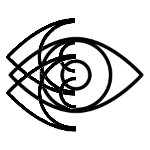
1. Introduction
-
Cataracts and Their Impact
Cataracts are characterized by the clouding of the natural lens, leading to impaired vision and reduced quality of life.
-
Wavefront Aberrometry: Measuring Optical Aberrations
Wavefront aberrometry is an objective method for measuring refractive power, using a tool to measure the manner in which a light beam moves through the tested eye. It offers detailed measurements of the movement of the light wavefront. In this way it can be used in the diagnosis of both higher-order and lower-order refractive errors.
-
Thesis Statement
Our essay explores the impact of wavefront aberrometry on cataract diagnosis and discusses its potential benefits.
2. Current Methods of Diagnosing Cataracts and Their Limitations
-
Visual Acuity Test
Measures how well you can read letters on an eye chart. Each eye is tested individually, while the other eye is covered.
Limitations: Doesn’t provide detailed information about the cataract itself; only evaluates overall visual function.
-
Eye Structure Exam (Slit Lamp)
Allows close examination of eye structures at the front of the eye, including the lens. The ophthalmologist assesses lens opacity, color, and any associated changes.
Limitations: Subjective interpretation, reliance on clinical experience, and inability to quantify cataract severity precisely.
-
Retinal Exam
Examines the retina for signs of cataracts. The eye is dilated with drops to allow a better view of the back of the eye.
Limitations: Limited resolution for certain types of cataracts.
-
Fluid Pressure Test (Applanation Tonometry)
Measures fluid pressure in the eye. A painless puff of air is blown into the eye to flatten the cornea.
Limitations: Not directly related to cataract diagnosis, but useful for ruling out glaucoma.
-
Lens Imaging Techniques
Provide images of the lens, allowing visualization of opacities and assessing their impact on vision. Examples include:
- Scheimpflug Imaging: Captures three-dimensional images of the lens.
- Optical Coherence Tomography (OCT): Provides cross-sectional images of the lens.
- Pentacam Scheimpflug Imaging: Combines Scheimpflug imaging with corneal topography to assess both cornea and lens.
Limitations: Cost and availability, calibration and standardization, individual variability and compatibility.
-
Contrast Sensitivity Testing
Measures a patient’s ability to distinguish objects with low contrast.
American Academy of Ophthalmology
Limitations: Doesn’t directly assess cataract severity, but reflects its effect on visual function.
-
Lens Retroillumination
A technique where light is directed through the lens, revealing opacities.
Limitations: Subjective interpretation; doesn’t quantify cataract severity.
3. Potential Benefits of Using Remote Wavefront Aberrometry for Cataract Detection
-
Higher Accuracy and Reliability
Remote wavefront aberrometry can enhance the precision and consistency of measuring the refractive power and optical aberrations of the eye, leading to better outcomes for cataract surgery. It can also help to optimize the selection and positioning of the intraocular lens (IOL) and to tailor the astigmatic correction according to the individual eye.
-
Faster and More Convenient
The non-invasive nature of remote wavefront aberrometry allows for quicker and easier assessments of the eye, reducing patient discomfort and waiting times. It can also eliminate the need for multiple preoperative and postoperative visits, as well as the use of eye drops or contact lenses.
-
Less Invasive and More Comfortable
Unlike traditional methods that require physical contact with the eye, such as applanation tonometry or keratometry, remote wavefront aberrometry provides a comfortable and safe experience for patients. It does not cause any corneal distortion, irritation, or infection, and it does not affect the tear film or intraocular pressure.
4. Existing Studies and Devices Using Remote Wavefront Aberrometry
-
ORA System
The ORA system is an intraoperative aberrometer that provides real-time measurements during cataract surgery, including total ocular astigmatism. The device uses intraoperative aberrometry, as well as inputs on postoperative outcomes, to help select customized IOLs for each eye.
The ORA system can be used to optimize the selection and positioning of toric IOLs, as well as to guide arcuate incisions for astigmatism correction. It can also be used to verify the IOL power and alignment in eyes that have undergone previous refractive surgery.
-
Tecnis IOL
The Tecnis IOL is a monofocal IOL with a modified prolate anterior surface that corrects overall spherical aberration of the average eye to near zero. Compared to eyes with spherical IOLs, visual performance testing in eyes with Tecnis lenses demonstrates superior outcomes.
The Tecnis IOL has been shown to improve contrast sensitivity, night vision, and functional vision in pseudophakic patients. It also reduces chromatic aberration and glare sensitivity.
-
Holos System
The Holos system is an intraoperative aberrometer that captures data in real time throughout the surgery. It uses a proprietary wavefront-analysis method that is faster than the interferometry used by the ORA system, allowing it to measure and compute the wavefront refraction more rapidly.
The Holos system can also monitor real-time refraction, confirm target refraction, and neutralize cylinder in pseudophakia with a toric lens and/or titrate limbal relaxing incisions at any point in the surgery. It uses the Barrett Universal II and Rx formulas as the starting point for its IOL algorithm.
5. Challenges and Limitations of Using Remote Wavefront Aberrometry for Cataract Detection
-
Cost and Availability
Remote wavefront aberrometry devices are expensive and not widely available, limiting their accessibility and affordability for many patients and surgeons. The initial investment and maintenance costs may outweigh the potential benefits for some practices.
-
Calibration and Standardization
Remote wavefront aberrometry devices require careful calibration and alignment to ensure accurate and reliable measurements. There is also a lack of standardization and validation of the algorithms and formulas used by different devices, making it difficult to compare results and outcomes across platforms.
-
Individual Variability and Compatibility
Remote wavefront aberrometry devices may not account for individual variations in corneal shape, tear film quality, pupil size, and ocular biomechanics, which can affect the accuracy and repeatability of the measurements. Moreover, some devices may not be compatible with certain types of IOLs, such as multifocal or diffractive lenses, which can introduce additional optical aberrations.
6. Conclusion
In this essay, we have explored the impact of wavefront aberrometry on cataract diagnosis, a technique that measures optical aberrations in the eye and provides valuable insights for cataract surgery. We have discussed the current methods of diagnosing cataracts and their limitations, as well as the potential benefits of using remote wavefront aberrometry for cataract detection, such as higher accuracy, faster convenience, and less invasiveness. We have also reviewed the existing studies and devices that use remote wavefront aberrometry for cataract detection, such as the ORA system, the Tecnis IOL, and the Holos system. Finally, we have addressed the challenges and limitations of using remote wavefront aberrometry for cataract detection, such as cost, availability, calibration, standardization, individual variability, and compatibility.
Using remote wavefront aberrometry for cataract detection has important implications and significance for both patients and surgeons. For patients, it can improve their visual outcomes and quality of life by reducing residual refractive errors, enhancing contrast sensitivity, and increasing spectacle independence. For surgeons, it can improve their surgical performance and efficiency by optimizing the IOL selection and positioning, guiding the astigmatic correction, and verifying the target refraction. Moreover, using remote wavefront aberrometry for cataract detection can advance the field of ophthalmology by providing more objective and reliable data on the optical properties of the eye and the effects of cataract surgery.
Despite the promising results of using remote wavefront aberrometry for cataract detection, there are still some areas that need further research and development. For example, more studies are needed to compare the accuracy and consistency of different remote wavefront aberrometry devices and algorithms, as well as to validate their outcomes in larger and more diverse populations. Furthermore, more efforts are needed to reduce the cost and increase the availability of remote wavefront aberrometry devices, as well as to standardize and calibrate their measurements. Additionally, more innovations are needed to enhance the compatibility of remote wavefront aberrometry devices with various types of IOLs, especially multifocal and diffractive lenses, as well as to account for individual variations in corneal shape, tear film quality, pupil size, and ocular biomechanics.





